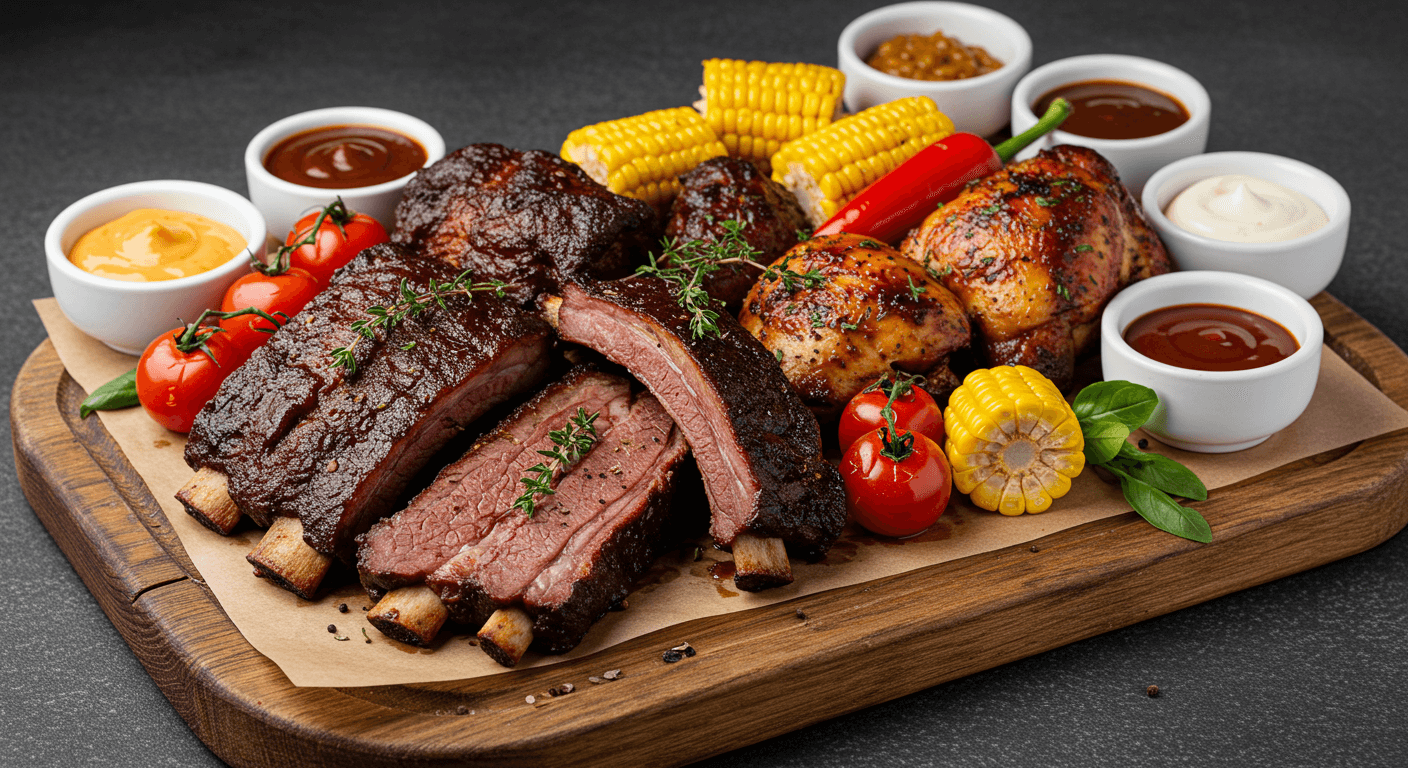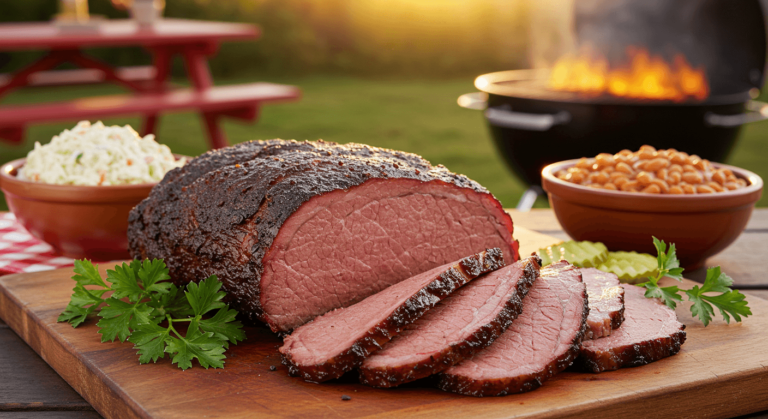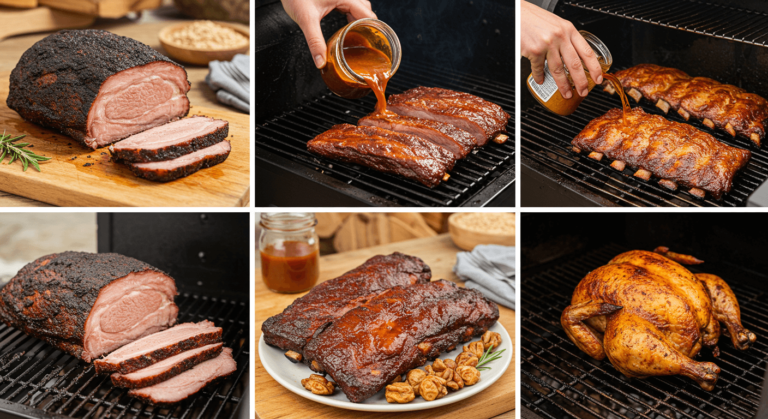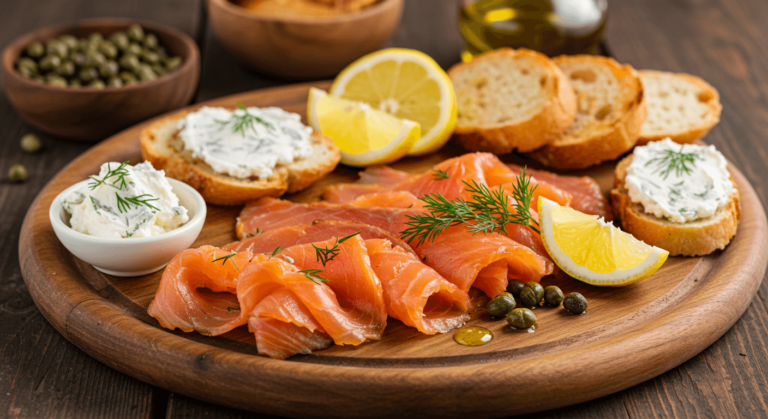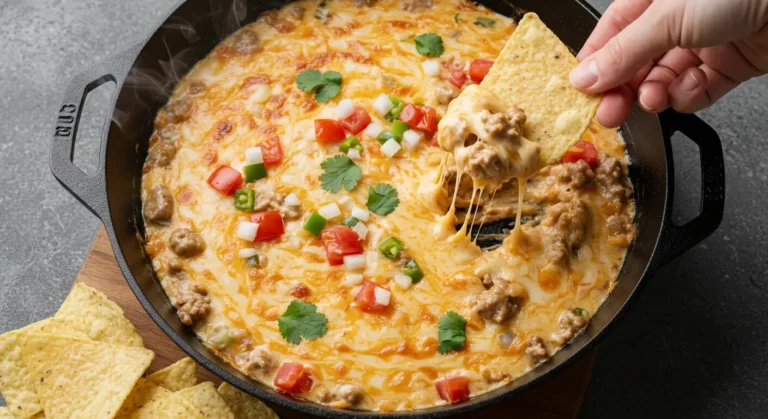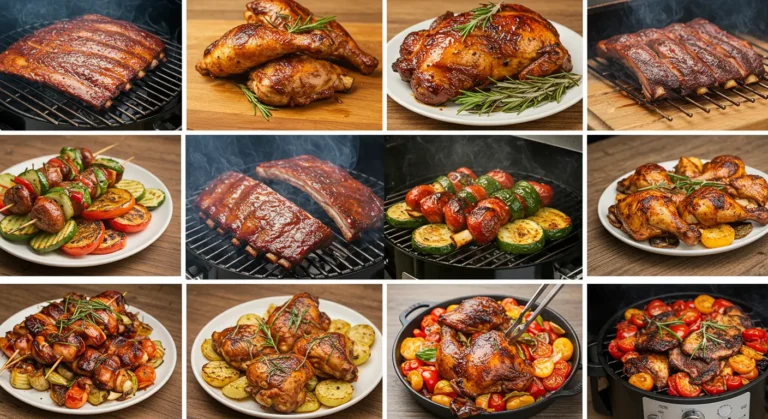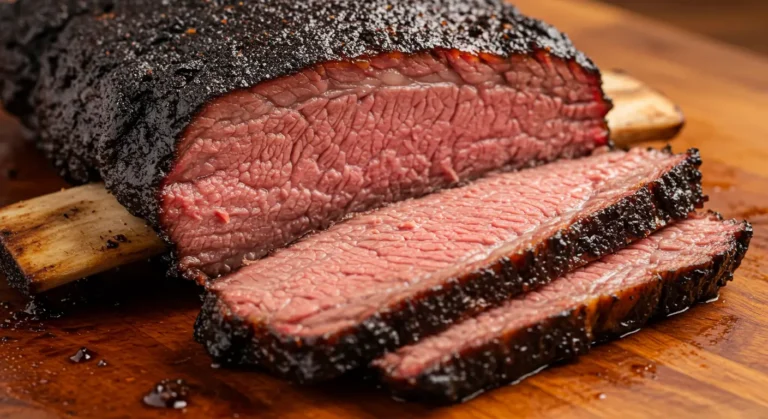The Ultimate Guide to Smoker Recipes: Master the Art of Smoke
There’s something almost magical about the moment you lift the lid on your smoker. That initial rush of warm, aromatic smoke carries with it the promise of something extraordinary. The rich, complex scent of wood smoke mingling with seasoned meat creates an experience that speaks to something primal within us all. Whether you’re new to smoking or a seasoned pitmaster, that moment never loses its charm.
Welcome to our comprehensive guide to smoker recipes. In this journey through smoke and fire, we’ll explore everything from the fundamental techniques that make smoking unique to specific recipes designed to showcase your skills. You’ll discover the interplay between different woods and foods, learn to master temperature control, and build confidence with foolproof recipes before advancing to show-stopping creations that will impress even the most discerning guests.
As someone who’s spent decades experimenting with smoke, fire, and flavor, I’m excited to share what I’ve learned along the way. Let’s dive into the wonderful world of smoking food.
What Makes Smoking Different from Other Cooking Methods?
What separates smoking from grilling or roasting? It’s all about time and indirect heat. While grilling is a high-heat, direct cooking method that’s quick and intense, smoking is patient and gentle. It allows tough cuts of meat to slowly transform into tender, flavorful dishes through extended exposure to low temperatures and wood smoke.
“Smoking isn’t just cooking—it’s transformation. It’s about allowing time to work its magic on food,” says Aaron Franklin, one of America’s most celebrated pitmasters.
Throughout this article, we’ll cover:
- The science behind great smoking techniques
- Different types of smokers and their unique benefits
- Essential recipes every smoking enthusiast should master
- The best meats and other foods for smoking
- Beginner-friendly recipes to build your confidence
- Advanced techniques for special occasions
- Troubleshooting tips and expert advice
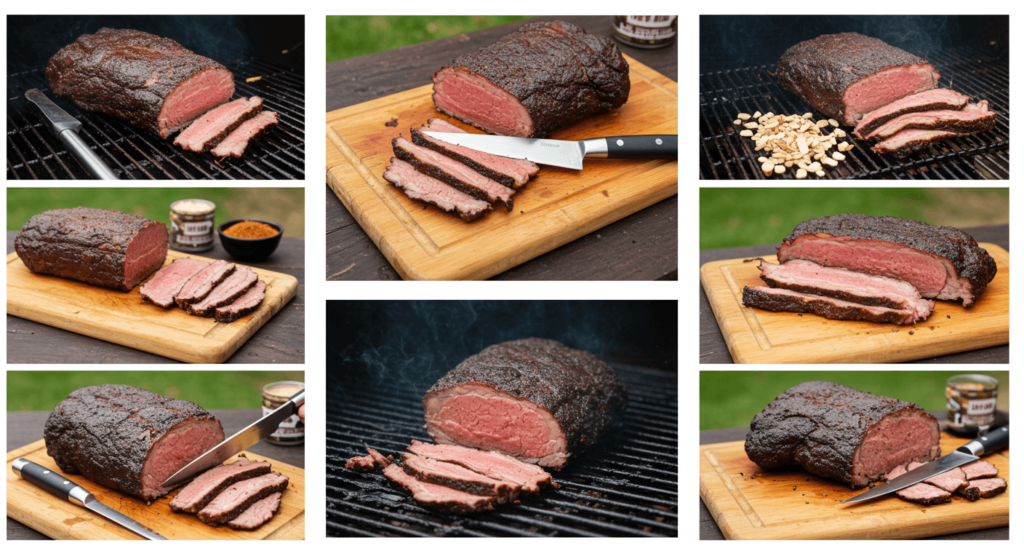
The Art and Science of Smoking Food
How Does Smoking Actually Work?
When you smoke food, you’re doing much more than simply applying heat. You’re engaging in a complex dance of chemistry that transforms proteins, renders fat, and creates new flavor compounds.
The magic happens between 225°F and 275°F—the sweet spot where connective tissues like collagen slowly break down into gelatin, creating that melt-in-your-mouth texture. Meanwhile, the smoke particles adhere to the surface of the food, forming that coveted dark exterior known as “bark” and potentially a pink “smoke ring” just beneath.
What’s the Best Wood for Smoking?
Wood selection isn’t just a matter of preference—it’s about pairing the right wood with the right food. Each type of wood imparts distinct characteristics:
- Hickory: Robust and bacon-like, ideal for beef and lamb
- Mesquite: Intense and earthy, perfect for beef and game meat
- Apple: Mild and sweet, excellent for chicken and turkey
- Cherry: Mild with a hint of fruitiness, complements beef and poultry
- Oak: Medium strength and versatile, works well with most meats
- Maple: Mild and slightly sweet, good for poultry and vegetables
- Pecan: Sweet and nutty, wonderful for poultry and beef
- Alder: Delicate and sweet, perfect for fish and seafood
“The right wood is like selecting the perfect wine to pair with a meal—it should complement, not overpower,” says Meathead Goldwyn, author of “Meathead: The Science of Great Barbecue and Grilling.”
Why Temperature Control Matters
Temperature control is perhaps the most critical aspect of successful smoking. Even small fluctuations can dramatically affect your results:
- Too hot: Food cooks too quickly, remaining tough and missing out on that deep smoky flavor
- Too cold: Extends cooking time unnecessarily and may leave food in the “danger zone” for bacterial growth too long
Invest in a good digital thermometer with dual probes—one for the smoker‘s ambient temperature and one for the food’s internal temperature. This single tool can transform your smoking experience.
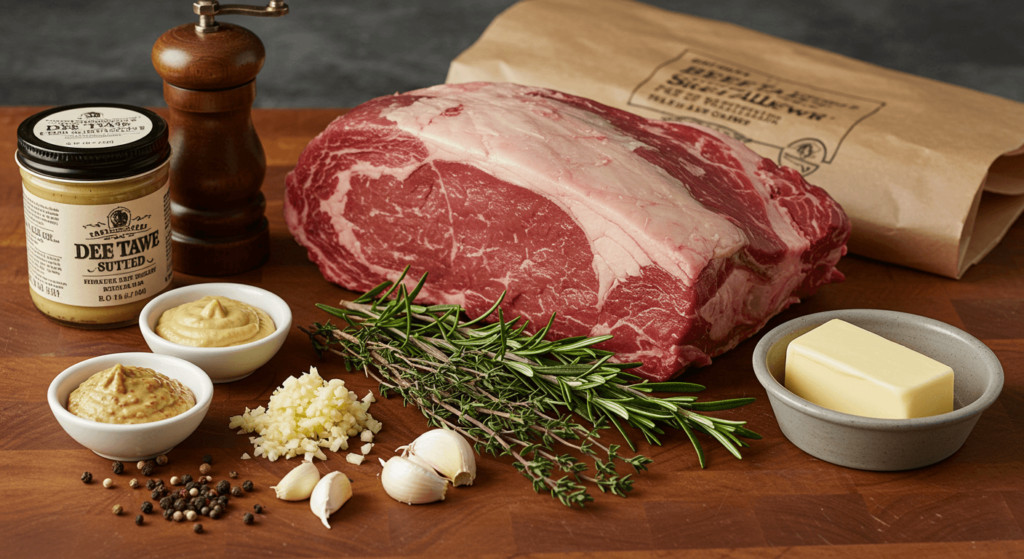
What is “The Stall” and How Do You Handle It?
Many beginners panic when they encounter “the stall”—a phenomenon where the internal temperature of large cuts plateaus for hours, typically around 150-170°F. This happens because of evaporative cooling: as moisture evaporates from the meat’s surface, it cools the meat, temporarily counteracting the heat.
Options for managing the stall include:
- Patience: Simply wait it out (purist approach)
- The Texas Crutch: Wrapping the meat in foil or butcher paper to prevent evaporation
- Increasing temperature: Raising the smoker temperature slightly to overcome the cooling effect
How Do I Adjust Ventilation for Better Results?
Ventilation controls both temperature and smoke quality. Remember this simple rule: intake vents control burning rate, while exhaust vents control how much smoke remains in the cooking chamber.
For clean smoke, keep the exhaust vent at least partially open at all times. Thin blue smoke is ideal—thick white smoke indicates incomplete combustion and can lead to bitter-tasting food.
What Type of Smoker Should I Use?
Offset Smokers
Often called “stick burners,” these traditional horizontal smokers feature a firebox attached to the side of the main cooking chamber. They produce authentic results but require more attention and skill.
Best for: Traditional barbecue enthusiasts who enjoy the process as much as the result
Electric Smokers
These plug-in units offer convenience and consistent temperature control. While purists may argue they lack authenticity, they’re perfect for beginners or those in locations where live fire cooking is restricted.
Best for: Beginners, apartment dwellers, and those who want to “set it and forget it”
Pellet Smokers
These modern marvels combine the convenience of electric with the flavor of wood by automatically feeding compressed wood pellets into a firebox. Many offer Wi-Fi connectivity and precise temperature control.
Best for: Tech-savvy cooks who want wood flavor without constant monitoring
Kettle Smokers
These adaptations of traditional kettle grills use charcoal and wood chunks placed to the side for indirect heat. They’re affordable entry points into smoking.
Best for: Those who already own a kettle grill and want to try smoking without investing in new equipment
Ceramic Kamado Smokers
These egg-shaped cookers with thick ceramic walls offer excellent heat retention and efficiency. They can maintain low temperatures for extremely long cooks with minimal fuel.
Best for: Versatile cooking across different techniques, from low-and-slow smoking to high-heat grilling and even baking
Propane Smokers
These vertical cabinets use propane as heat and add wood chunks for smoke flavor. They offer good temperature control and convenience.
Best for: Beginners looking for more authentic flavor than electric but with similar convenience
Drum Smokers
Often homemade or “ugly drum smoker” (UDS) kits, these simple, effective smokers are made from 55-gallon steel drums. They’re surprisingly efficient and produce excellent results.
Best for: DIY enthusiasts and those who appreciate minimalist design with maximum performance
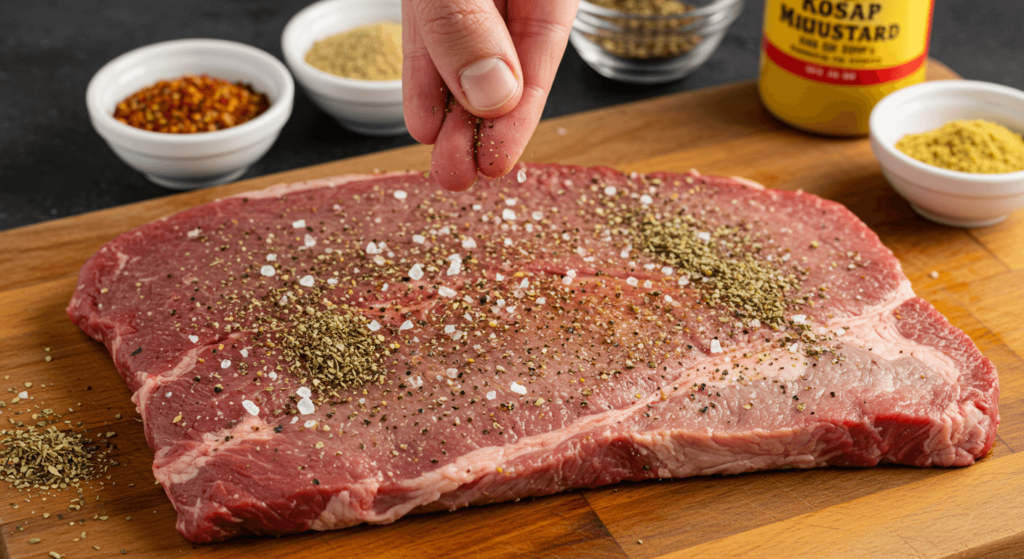
What Are the Essential Smoker Recipes Everyone Should Master?
How to Smoke the Perfect Beef Brisket
The holy grail of barbecue, brisket requires patience but rewards you with spectacular results.
Ingredients:
- 12-14 pound whole beef brisket (look for good marbling)
- ¼ cup kosher salt
- ¼ cup coarse black pepper
- 2 tablespoons garlic powder (optional)
- 2 tablespoons onion powder (optional)
Preparation:
- Trim excess fat, leaving about ¼-inch fat cap
- Mix salt and pepper (and optional spices) to create a simple “dalmatian rub”
- Apply rub generously to all sides of the brisket
- Let sit at room temperature for 1 hour before smoking
Smoking Instructions:
- Preheat smoker to 250°F using oak or hickory wood
- Place brisket fat-side up on the smoker grates
- Smoke until internal temperature reaches 165°F (approximately 6-8 hours)
- Wrap in butcher paper and continue smoking until internal temperature reaches 203°F (another 3-5 hours)
- Rest wrapped brisket in a cooler or oven (turned off) for at least 1 hour before slicing
Pro Tip: Slice brisket perpendicular to the grain for maximum tenderness. The point and flat muscles run in different directions, so adjust your slicing accordingly.
How to Smoke Perfect Beef Ribs
Beef ribs are impressive in both size and flavor, often called “dinosaur ribs” for their substantial appearance.
Ingredients:
- 1 rack of beef plate ribs (3-4 bones)
- 2 tablespoons kosher salt
- 2 tablespoons coarse black pepper
- 1 tablespoon garlic powder
- Mustard or oil for binding (optional)
Preparation:
- Remove the membrane from the bone side of the ribs
- Apply a thin layer of mustard or oil if using
- Season generously with salt, pepper, and garlic powder
- Let sit for 30 minutes before smoking
Smoking Instructions:
- Preheat smoker to 275°F using oak, hickory, or pecan wood
- Place ribs bone-side down on smoker
- Smoke for approximately 6 hours or until internal temperature between bones reaches 203-205°F
- Wrap in butcher paper and rest for 30 minutes before serving
Pro Tip: Don’t rush beef ribs by cranking up the heat. The goal is to slowly render the significant fat content and break down the tough connective tissue for that ultimate melt-in-your-mouth experience.
How to Smoke Juicy Chicken
Smoked chicken can be challenging because it’s easy to dry out, but with the right technique, it becomes incredibly flavorful and juicy.
Ingredients:
- 1 whole chicken (4-5 pounds)
- 2 tablespoons kosher salt
- 1 tablespoon brown sugar
- 1 tablespoon paprika
- 1 teaspoon black pepper
- 1 teaspoon garlic powder
- 1 teaspoon onion powder
- ½ teaspoon dried thyme
Preparation:
- Spatchcock the chicken by removing the backbone and flattening it
- Mix all dry ingredients to create a rub
- Season chicken generously, including under the skin
- Let chicken sit in refrigerator uncovered for 2-4 hours (or overnight) to dry the skin
Smoking Instructions:
- Preheat smoker to 300°F using apple, cherry, or maple wood
- Place chicken skin-side up directly on grates
- Smoke until breast meat reaches 160°F and thighs reach 175°F (approximately 1.5-2 hours)
- Rest for 10-15 minutes before carving
Pro Tip: Higher smoking temperatures (300-325°F) are better for chicken as they help render the fat in the skin and avoid the rubbery texture that can occur at lower temperatures.
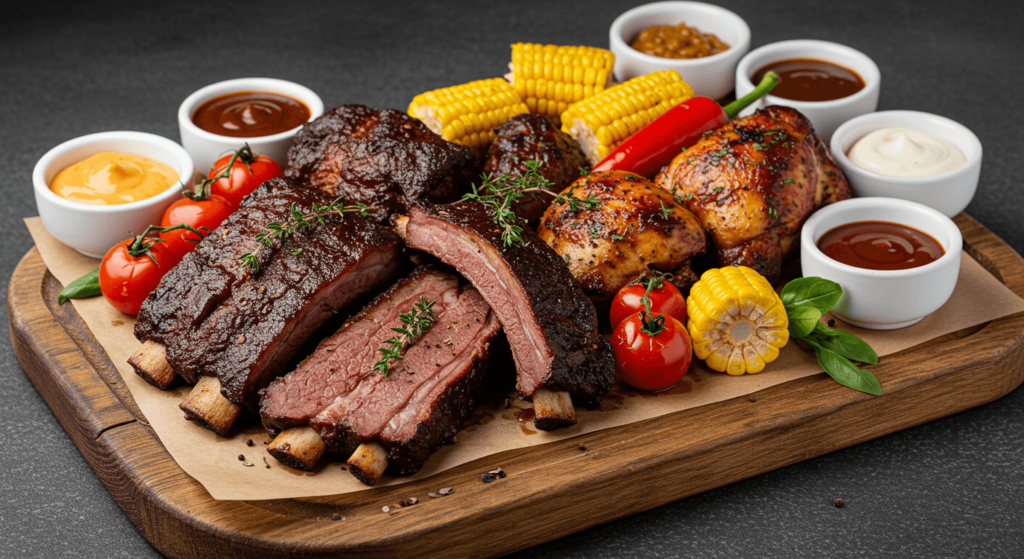
How to Smoke a Turkey That Will Steal the Show
Smoked turkey makes for an unforgettable holiday centerpiece.
Ingredients:
- 12-14 pound turkey, completely thawed
- ¼ cup kosher salt
- 2 tablespoons brown sugar
- 2 tablespoons paprika
- 1 tablespoon black pepper
- 1 tablespoon garlic powder
- 1 tablespoon onion powder
- 1 tablespoon dried thyme
- 1 teaspoon ground sage
- ½ cup butter, melted (for basting)
Preparation:
- Remove turkey from packaging, remove giblets, and pat dry
- Mix all dry ingredients to create a rub
- Season turkey inside and out, and under skin where possible
- Let turkey sit uncovered in refrigerator overnight to dry the skin
- Allow turkey to come to room temperature for 1 hour before smoking
Smoking Instructions:
- Preheat smoker to 325°F using apple, cherry, or pecan wood
- Place turkey breast-side up on a roasting rack
- Smoke until breast meat reaches 165°F (approximately 3-4 hours)
- Baste with melted butter every hour
- Tent with foil if skin browns too quickly
- Rest for 20-30 minutes before carving
Pro Tip: Consider brining your turkey for 24 hours before smoking for extra moisture and flavor penetration.
What Are the Best Meats for Smoking?
Beef Cuts Ideal for Smoking
Beef’s robust flavor stands up beautifully to smoke:
Brisket: The king of smoked meats, requires 12-16 hours at 250°F Beef Ribs: Impressive and rich, 6-8 hours at 275°F Chuck Roast: The “poor man’s brisket,” 6-8 hours at 250°F Prime Rib: Luxurious special occasion smoke, 3-4 hours at 250°F Beef Cheeks: Underrated cut that becomes incredibly tender, 6-8 hours at 250°F
For beef, hickory, oak, and mesquite provide complementary strong flavors.
Lamb Cuts That Shine in the Smoker
Lamb’s distinctive flavor pairs wonderfully with smoke:
Leg of Lamb: 4-5 hours at 250°F Lamb Shoulder: 5-6 hours at 250°F Lamb Ribs: 3-4 hours at 250°F
For lamb, fruitwoods like apple or cherry help balance the meat’s natural gaminess.
Poultry Options for the Smoker
Poultry absorbs smoke flavor quickly:
Whole Chicken: 2-3 hours at 300°F Turkey: 3-4 hours at 325°F Chicken Thighs: 1.5-2 hours at 300°F Duck: 3-4 hours at 275°F Quail or Cornish Game Hens: 1 hour at 300°F
For poultry, lighter woods like apple, cherry, or maple prevent overpowering the meat.
Game Meats Worth Trying
Game meats benefit from smoking’s tenderizing effect:
Venison Roasts: 3-4 hours at 225°F Wild Boar Shoulder: 8-10 hours at 250°F Bison Brisket: 10-12 hours at 250°F Elk Roast: 3-4 hours at 225°F
For game meats, cherry and apple wood help tame gaminess while hickory adds depth.
How Can I Smoke Beyond Just Meat?
Vegetables That Transform in the Smoker
Vegetables develop incredible depth when smoked:
Whole Onions: 1 hour at 250°F Bell Peppers: 45 minutes at 250°F Corn on the Cob: 30-45 minutes at 250°F Mushrooms: 45 minutes at 250°F Tomatoes: 30 minutes at 225°F Potatoes: 1.5-2 hours at 250°F Cabbage: 1 hour at 250°F Cauliflower: 1 hour at 250°F
Vegetables generally pair well with milder woods like apple, cherry, or maple.
Smoking Seafood: Hot and Cold Techniques
Seafood requires special attention to prevent overcooking:
Hot Smoking (cooking with smoke):
- Salmon Fillets: 1 hour at 225°F
- Trout: 45-60 minutes at 225°F
- Shrimp: 20-30 minutes at 225°F
- Oysters: 30-40 minutes at 225°F
Cold Smoking (flavoring without cooking, requires special equipment):
- Salmon for Lox: 4-8 hours at 70-80°F
- Scallops: 1-2 hours at 70-80°F
Seafood pairs beautifully with alder and fruitwoods like apple or cherry.
Creative Applications: Beyond the Basics
These unexpected items take on remarkable character when smoked:
Butter: Place a dish of butter in the smoker for 1 hour at 180°F Cheese: 30-60 minutes at 180°F (on a cool day) Salt: 4 hours at 180°F Nuts: 30-45 minutes at 225°F Olive Oil: 2 hours at 180°F in a heat-safe container Honey: 2 hours at 180°F in a heat-safe container Ice for Cocktails: 30 minutes at 180°F Flour for Baking: 1 hour at 180°F
Use these smoked ingredients to add subtle smoky notes to dishes that weren’t smoked directly.
What Are Some Foolproof Recipes for Beginners?
Smoked Chicken Quarters: The Perfect Starter Recipe
Chicken quarters are forgiving and cook relatively quickly.
Ingredients:
- 4 chicken leg quarters
- 2 tablespoons olive oil
- 1 tablespoon kosher salt
- 2 teaspoons paprika
- 1 teaspoon black pepper
- 1 teaspoon garlic powder
- 1 teaspoon onion powder
- ½ teaspoon dried thyme
Instructions:
- Preheat smoker to 300°F with apple or cherry wood
- Rub chicken with oil and season with mixed spices
- Place skin-side up on smoker
- Cook until internal temperature reaches 175°F (about 1.5 hours)
- No wrapping or complex techniques needed!
“Start with chicken quarters—they’re inexpensive and quick enough that you’ll know if something’s wrong before you’ve invested a whole day,” advises Myron Mixon, four-time world barbecue champion.
Smoked Beef Chuck Roast: Brisket-Like Results with Less Time
Chuck roast delivers many of the same satisfying qualities as brisket but in half the time.
Ingredients:
- 4-5 pound beef chuck roast
- 2 tablespoons kosher salt
- 2 tablespoons coarse black pepper
- 1 tablespoon garlic powder
Instructions:
- Preheat smoker to 250°F with oak or hickory wood
- Season chuck roast generously on all sides
- Smoke until internal temperature reaches 165°F (about 3-4 hours)
- Wrap in foil with ½ cup beef broth
- Continue smoking until internal temperature reaches 200-205°F (another 1-2 hours)
- Rest for at least 30 minutes before shredding or slicing
Smoked Salmon: Quick, Impressive, and Delicious
Salmon is perfect for beginners because it smokes quickly and is incredibly forgiving.
Ingredients:
- 2 pounds salmon fillet, skin on
- ¼ cup brown sugar
- 2 tablespoons kosher salt
- 1 teaspoon black pepper
- Lemon slices for serving
Instructions:
- Preheat smoker to 225°F with alder or apple wood
- Mix brown sugar, salt, and pepper and apply to salmon
- Let salmon sit with rub for 30 minutes
- Smoke until internal temperature reaches 145°F (about 1 hour)
- Serve with fresh lemon slices
Smoked Queso Dip: A Crowd-Pleasing Appetizer
This shareable appetizer is nearly impossible to mess up.
Ingredients:
- 1 pound Velveeta cheese, cubed
- 8 ounces cream cheese
- 1 can Rotel tomatoes with green chilies
- 1 cup cooked ground beef (seasoned with taco seasoning)
- ¼ cup chopped onion
- 2 cloves minced garlic
- 1 jalapeño, diced (seeds removed for less heat)
- ¼ cup milk (to adjust consistency)
- Cilantro for garnish
Instructions:
- Preheat smoker to 250°F with any wood you prefer
- Combine all ingredients except milk in a disposable aluminum pan
- Smoke for 45-60 minutes, stirring occasionally
- Add milk as needed to reach desired consistency
- Serve warm with tortilla chips
What Advanced Recipes Will Impress My Guests?
Smoked Beef Prime Rib: The Ultimate Special Occasion Centerpiece
Ingredients:
- 7-8 pound prime rib roast (3-4 bones)
- ¼ cup unsalted butter, softened
- 3 tablespoons kosher salt
- 2 tablespoons black pepper
- 2 tablespoons fresh rosemary, finely chopped
- 2 tablespoons fresh thyme, finely chopped
- 6 cloves garlic, minced
- 2 tablespoons Dijon mustard
Instructions:
- The day before cooking, mix butter with herbs, garlic, and mustard
- Pat roast dry and coat with the herb butter mixture
- Season generously with salt and pepper
- Refrigerate uncovered overnight
- Remove from refrigerator 2 hours before cooking
- Preheat smoker to 225°F with oak or hickory wood
- Smoke until internal temperature reaches 125°F for medium-rare (about 3-4 hours)
- Rest for 30 minutes
- Optional: Sear in 500°F oven for 10 minutes for a better crust
- Slice and serve
Competition-Style Smoked Brisket
This method incorporates techniques used by competition barbecue teams.
Ingredients:
- 12-14 pound whole beef brisket, Choice grade or higher
- ¼ cup kosher salt
- ¼ cup coarse black pepper
- 2 tablespoons granulated garlic
- 2 tablespoons onion powder
- 1 tablespoon paprika
- 2 tablespoons beef bouillon powder
- ¼ cup beef tallow or butter for wrapping
- ¼ cup apple juice or beef broth for spritzing
Instructions:
- Trim brisket extensively, removing hard fat and creating aerodynamic shape
- Apply light coating of yellow mustard as a binder
- Season with rub mixture, applying in layers
- Let sit for 2 hours at room temperature
- Preheat smoker to 250°F with post oak or hickory
- Place brisket fat side down (controversial, but helps form better bark on the presentation side)
- Spritz with apple juice every hour after the first 3 hours
- When internal temperature reaches 165-170°F and bark is dark (usually 6-8 hours), wrap tightly in butcher paper with beef tallow
- Continue smoking until probe tender at 202-205°F (usually another 3-5 hours)
- Rest in a cooler for 2-4 hours before slicing
Smoked Beef Cheeks: The Hidden Gem Cut
Ingredients:
- 4 beef cheeks (about 3-4 pounds total)
- 2 tablespoons kosher salt
- 2 tablespoons black pepper
- 1 tablespoon cumin
- 1 tablespoon paprika
- 1 tablespoon oregano
- 1 tablespoon brown sugar
- 2 tablespoons olive oil
- 1 cup beef broth for wrapping
Instructions:
- Trim silver skin and excess fat from beef cheeks
- Rub with olive oil and season with spice mixture
- Let sit for 1 hour at room temperature
- Preheat smoker to 250°F with oak or hickory
- Smoke for 3 hours
- Wrap in foil with beef broth
- Continue smoking until fork tender (about 3 more hours)
- Rest for 30 minutes
- Slice or shred and serve on tortillas with your favorite toppings
Smoked Ice Cream: A Dessert No One Will Forget
Ingredients:
- 1 quart heavy cream
- 1 can sweetened condensed milk
- 1 tablespoon vanilla extract
- Pinch of salt
- Additional flavors as desired (chocolate, berries, etc.)
Instructions:
- Cold smoke heavy cream in a shallow container for 1 hour at 180°F using apple or cherry wood
- Chill the smoked cream thoroughly
- Whip the cold smoked cream until stiff peaks form
- Fold in condensed milk, vanilla, salt, and any additional flavors
- Transfer to a freezer-safe container
- Freeze for at least 6 hours
- Serve with a garnish of smoked salt or smoked nuts
The Art of Rubs and Marinades
Basic Rub Formula
A good rub needs balance. Start with this ratio and adjust to your taste:
- 4 parts salt
- 3 parts sugar (brown or white)
- 2 parts savory (paprika, chili powder)
- 1 part spices (garlic, onion, cumin, etc.)
Injection Marinade for Extra Juiciness
For large cuts of meat, consider injection:
- 1 cup beef or chicken broth
- 2 tablespoons melted butter
- 1 tablespoon Worcestershire sauce
- 1 teaspoon garlic powder
- 1 teaspoon onion powder
- ½ teaspoon black pepper
Regional BBQ Sauce Styles
- Kansas City: Thick, sweet, tomato-based
- Carolina: Vinegar-based with varying levels of heat
- Alabama White: Mayo-based with vinegar and spices, perfect for chicken
- Texas: Thin, spicy, used sparingly if at all
- Memphis: Similar to Kansas City but less sweet
Troubleshooting Common Smoking Problems
What if My Meat Stalls Too Long?
If you’re not a purist, there’s no shame in the Texas Crutch—simply wrap your meat tightly in foil or butcher paper with a small amount of liquid to push through the stall.
How Do I Fix Tough, Dry Results?
- For tough meat: It likely didn’t cook long enough. Contrary to intuition, longer cooking often means more tender results in smoking.
- For dry meat: It likely cooked too hot or too long. Use a good thermometer and don’t exceed target temperatures.
What if I Get Too Much Smoke Flavor?
- Use less wood next time
- Make sure you’re getting clean, thin blue smoke, not thick white smoke
- Consider using milder woods like apple or cherry
- Wrap meat earlier in the cooking process
How Do I Get a Better Bark?
- Make sure your meat is dry before applying rub
- Use rubs with adequate salt content
- Don’t wrap too early
- Consider a higher sugar content in your rub for a darker bark
Frequently Asked Questions
The Community Aspect of Smoking
“When you share smoked food with friends and family, you’re not just feeding them—you’re sharing your passion and creating memories,” says Tuffy Stone, world barbecue champion.
In Conclusion
Mastering the art of smoking food is a lifelong journey. While this guide provides a comprehensive foundation, don’t be afraid to experiment and develop your own signature techniques. Every pitmaster has their own style, and finding yours is part of the joy.
Remember that some of the best smoking sessions don’t go exactly as planned, but they still produce delicious results and valuable lessons. Be patient, pay attention to your food, and above all, enjoy the process.
What smoking recipes will you try first? We’d love to hear about your smoking adventures and any questions you might have. Happy smoking!
Have You Tried This Recipes!
This smoker recipe delivers perfect ribs every time! The seasoning, slow smoking, and BBQ
This smoker recipe delivers perfect ribs every time! The seasoning, slow smoking, and BBQ sauce finish create an unbeatable flavor. The instructions are clear, making it easy even for beginners. The result? Tender, smoky, fall-off-the-bone ribs that everyone loves. Highly recommended for BBQ lovers! 🔥🍖

